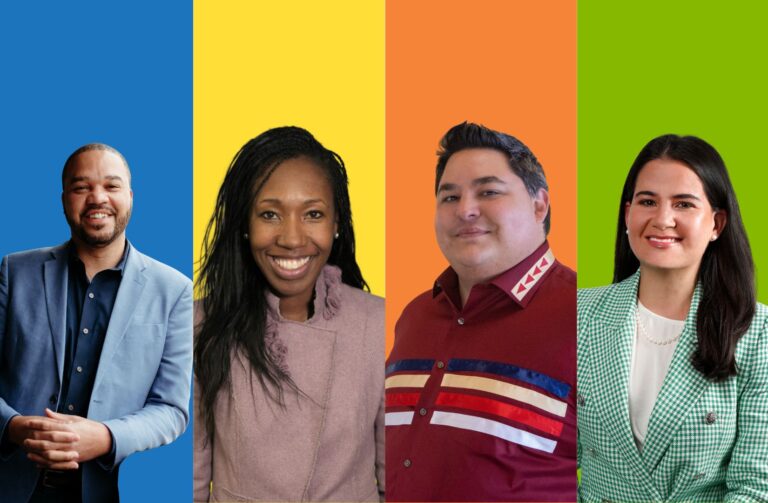Becoming 2Gen: Ascend Network Partners Respond
Becoming 2Gen: Ascend Network Partners Respond, Pt. 1
"How do we get started?" is a frequent question Ascend staff receive from organizations new to the two-generation approach. Taking on new program components and more than doubling a target population can seem overwhelming. However, the 2Gen approach starts with a shift in mindset, and organizations at all levels of scale can begin thinking differently about how they serve the children and their parents touched by their programs.
Ascend Network Partners have consistently demonstrated that organizations can make much progress towards serving whole families, often simply by working creatively with the resources and relationships that are currently available to them. In this blog series, Network Partners share their stories and the steps they took in becoming more 2Gen.
Beginning 2Gen Work
At Partners for Education at Berea College, work starts with the child. Partners for Education utilizes a place-based, student-focused approach to improve educational outcomes in Appalachian Kentucky. They use a cradle-to-career model and braid services and align funding streams to optimize results, leveraging $18 million from public and private funding streams and serving 35,000 young people and their families in a 30 county region annually. Partners for Education's programming aims to help youth succeed in school and transition into postsecondary education. "We started with getting teens to think about college, and then with parents to help the young person," explains Dreama Gentry, executive director of the program. "Then parents got interested in completing a GED and further education."
Gentry's team later discovered another area in which a two-generation approach could improve outcomes for the families they serve: "Our first work was with middle and high school students," she says. "We later realized we were missing an opportunity by not connecting the early childhood piece." Currently, Partners for Education is collaborating with local community members, a school district, and another local postsecondary institution to launch a scholar house, which focuses on supporting disconnected young parents ages 24 and under in their pursuit of educational success. "Let’s do 2Gen where our student is the parent," says Gentry of the program's genesis. The scholar house is adjacent to an Eastern Kentucky University satellite campus and will incorporate housing and a co-located child care facility. In addition, the University is seeking to increase job success by aligning the majors they offer around the regional job market. Partners for Education was recently designated a White House Rural Council Rural IMPACT site and is getting technical assistance through the demonstration program to support this project.
Steps Toward 2Gen Integration and Partnership
· Adapting evidence-based programs: The Families and Schools Together (FAST) program was the organization's first foray into two-generation work and was also their first 2Gen funding opportunity. This evidence-based program, which Partners for Education implemented through a grant from the Office of Justice, focuses on building social capital for families, increasing connections between families and schools and improving family cohesion. "It was very culturally appropriate," Gentry says of the program.
· Partnering for impact: Save the Children contributes a high-quality, evidence-based home visiting model, while Partners for Education provides financial literacy training for the young parents in their program. "We stepped back," says Gentry. "We are looking at how we can serve the parent." She continues, "It’s important to recognize that you don’t have to do all the pieces – if there is someone who is doing that piece well, and then design it together."
· Connecting around a shared vision: "Our partnerships come from sitting down with people in the same region, serving the same populations, and realizing, 'Hey, what if we focus more energy on this, and you focus on this piece you are good at?'" For the scholar house, Gentry's team introduced the idea to the community, and got a quick reply from the University. When programs can help other organizations see how collaboration can help them achieve better outcomes for the family members they support, they are often eager to partner.
· Emphasizing data-sharing and assessments: Gentry has found that for partnerships to be successful, it is important to have data sharing agreements and accountability in place. "Our agreement ensures that when they are measuring outcomes for the child, and we are working with parents in other setting, there would be one data reference for the children," Gentry shares. In addition to measures on health and safety, Partners for Education uses a state assessment to measure progress by the time the child enters kindergarten, while Save the Children uses the Peabody Development Motor Scales once the child reaches third grade.
· Leveraging Ascend Network Lessons: Gentry is especially interested in sharpening her outcomes work around definitions outlined by the Ascend Network 2Gen Outcomes Working Group (see report). "We’ve always had a two-generation approach – we knew the families had be engaged in order for the student to succeed, and the families had to succeed along with the child,” she shares. “Through the Ascend Network, we have realized there are 2Gen programs, where you measure outcomes for child and parents, analyzing both together and looking for the synthesis. Is there increased impact, a multiplier effect? That’s what we are interested in seeing.”
Words of Advice
To those who are starting out on 2Gen efforts, Gentry has several pieces of advice:
· Start small, but think big – don’t be afraid to take time to learn and grow.
· Focus on pilots and models that have replicability potential and tap a range of funding streams
· Ensure there is an evaluation plan to assess what works and what doesn’t in real-time.
· Build relationships for effective partnerships. As Gentry notes, "You may not have the capacity to do both [child and parent components]. What we need to do is create the capacity for integration."
Related Posts


